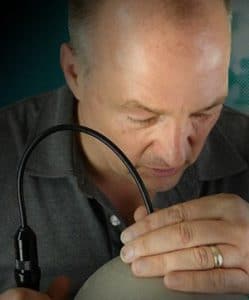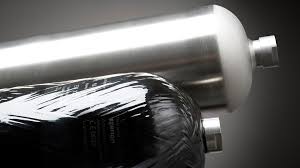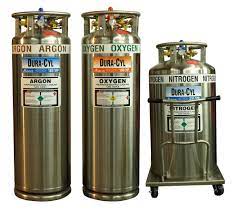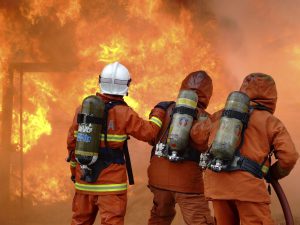
Cylinder Inspection Training: Why a Maintained Cylinder Is a Happy Cylinder
Uncover the importance of gas cylinder inspections and training. Dive deep into ensuring safety, boosting efficiency, and prolonging cylinder life.
Back in November of 2019 I wrote a BLOG post reference an incident involving a Carbon Dioxide cylinder (CLICK HERE TO READ BLOG). That incident and resulting cylinder injury resulted in a lawsuit. In August of 2019, an entertainer was using a Carbon Dioxide cylinder during a wedding party. The cylinder was not secured, flew into a group of people, and injured 3 wedding guests. The report said the 3 guests went to the hospital, but none appeared to be seriously injured at that time. A little over a year later, one of the guests has filed a personal injury lawsuit reference the incident.
The lawsuit is making 5 specific claims of neglect resulting in the injury. These claims are not only against the entertainer (DJ) using the carbon dioxide cylinder, but also lists the facilities which rented the carbon dioxide cylinder and the facility where the carbon dioxide cylinder was being used. The plaintiff claims the following in the civil lawsuit.

Claim #1 – The facility had a duty to ensure a safe premise. The facility failed to ensure that the compressed gas canister was properly handled and secured.
Claim #2 – The entertaining company negligently operated, handled and controlled the compressed gas cylinder.
Claim #3 – The manufacturer, of the equipment used to create the affect, failed to provide training of their machine and the compressed gas cylinder.
Claim #4 – The welding supply company, who supplied the carbon dioxide cylinder, owed a duty to ensure that the user of the cylinder had adequate training on the use of the cylinder. They also failed to maintain and inspect the gas cylinder.
Claim #5 – Anybody with responsibility for the incident that used the equipment or supplied any specialty gases.
This is the first step in a civil lawsuit, list anybody and everything that might be involved in the litigation. Simply listing the parties does not indicate that they will be held civilly responsible, as the suit states. That is for the jury to decide. However, each one of the entities will likely seek counsel to protect their interests. And to defend against the claims they will need to provide documentation that they are not liable. Both steps cost time and money.
The basic claim to this injury lawsuit is that someone used a compressed gas cylinder without proper training, and the cylinder may not have been safe to use. They list the venue, the entertaining company, the manufacturer of the equipment and company which supplied the gas. It will be interesting to follow if any of the listed parties is held civilly responsible. I will go out on a limb and provide some of my observations reference this case – not knowing exact details but focusing on the listed claims.
Claim #1 – The facility needs to ensure the safety of the guests. In this case a third party, hired by the wedding party, brings in a carbon dioxide cylinder. The facility might have other carbon dioxide cylinders, possibly for beverage service, that were not involved in the incident. Since the facility already has similar cylinders on site, they would not find a reason not to authorize this type of cylinder from coming on to the property. They might be able to request proof of training, if an outside source is going to use the cylinder on site. But they would have no direct control of the cylinder or its operation.
Claim #2 – The entertaining company / DJ negligently handled the cylinder. This is tough to argue, as, while handling the cylinder, it injured wedding guests. The questions to ask might involve training for the DJ. Was the DJ trained in handling the compressed gas? Did they know what to look for to determine if a cylinder was safe to use. Were they negligent in handling the cylinder? If the DJ can not prove training in the use of a hazardous material, they might have some legal exposure. If the DJ can state the cylinder was not safe to use, it would still fall back as the operator of the cylinder. Did the DJ know how to identify an unsafe cylinder?
Claim #3 – The manufacturer of the equipment used, did not provide training to the user. This might be a stretch. The equipment does use a compressed gas cylinder. However, how would any manufacturer be able to ensure that anyone who uses the equipment has the training on that specific function? The user / purchaser may need to show that they received training on a specific piece of the equipment used (cylinder), but the manufacturer might be too far removed.
Claim #4 – The welding company which supplied the gas should have provided training for the use of the cylinder. They also must maintain the cylinder they rented. For the first part, I would argue as I did with the manufacturer (#3). They simply rent an item and would assume that the renter knows the risks and has been properly trained. However, on the second part, they must maintain the cylinder, might be an issue. If the plaintiff can show that the cylinder was unsafe when it was rented, that may make them liable. One way to prove that it was rented in a safe condition would be to have proper inspection records. If the company can not produce visual or hydrostatic testing records, then they might hold a portion of the liability. However, if nothing can be shown to prove the cylinder was not safe to rent, then that might be their defense.
Claim #5 – Catch all – anybody which was involved or handled the cylinder should have been trained in its proper handling. Claim #5 simply reminds us that if we are handling compressed gases, they are considered hazardous material. Because of the dangers, training is required.
It is horrible that someone was injured by a compressed gas cylinder. Considering the number of compressed gas cylinders being used, and not causing injuries, this is a very rare occurrence. But since someone was injured, persons look for fault and blame. In this case it boils down to the basics, properly documented training, and documented inspections/ tests. Persons and facilities rarely get the training on cylinders because injuries caused by cylinders are a rare occurrence. They do not document the conditions of the cylinder, because issues are rare. However, such as in this case, having the training and inspection records would go a long way in defending yourself and reducing any civil liabilities. Protect yourself and your facility from litigation by getting the training and learning how to document a visual inspection.

I enjoy continuing to build the business based on safety since 1999. CTS focuses on the inspection of high pressure cylinders, the maintaining of the valves and basic maintenance of high pressure compressor systems. CTS stays current in techniques and tools to train both the new and novice employee. We publish articles, update training tools and have created an APP to assist during the inspection process.
#cylinder #safety #hazmat #training #cylinderinspectiontraining #cylindex

Uncover the importance of gas cylinder inspections and training. Dive deep into ensuring safety, boosting efficiency, and prolonging cylinder life.

Is your composite cylinder showing signs of wear? Discover when to seek a professional repair service in our comprehensive guide.

29 CFR 1910.101 intro Handling cryogenic cylinders involves working with extremely low-temperature gases that pose unique safety risks. To ensure the safe handling, storage, and transportation of these hazardous materials,

Introduction Firefighters encounter many risks while on duty, including hazardous materials and high pressure bottles. High pressure bottles are used for a variety of purposes in firefighting, including powering hydraulic